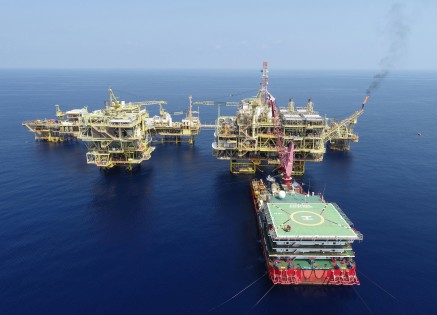Copyright © 2025 lmitac.com All Rights Reserved. Contact - Terms and Conditions - Privacy Policy - Quality Policy - Become an instructor - Vacancies - Sitemap
London Maritime Academy is a trade name for London Premier Groupversion: 2.9.0
London Maritime Academy is a trade name for London Premier Group

Posted on : 6/11/2025, 11:03:51 PM
In a fast-paced and ever-changing world, marine and industrial companies are under increasing pressure to reduce unplanned breakdowns and lower operating costs. This is where the power of predictive maintenance comes in, emerging as one of the most effective tools for achieving these goals. Gone are the days of waiting for a machine to break down before initiating repairs, but we are now in the age of data and analytics, where failures can be predicted before they occur, ensuring smoother and more efficient operations.
Thus, if you feel that regular maintenance doesn't prevent unexpected breakdowns or that repair costs rise without warning, you're not alone. Many professionals struggle with the inability to predict when a machine will stop functioning, making predictive maintenance a proactive strategy specifically designed to address these challenges. So, this article will guide you through how this technology works, how it differs from preventive maintenance, and why it has become essential for safeguarding the efficiency and safety of marine operations.
Basically, predictive maintenance (PdM) is a maintenance technique that relies on data and advanced analytics to predict when equipment may fail. Instead of waiting for failures or performing scheduled maintenance according to a fixed schedule, this strategy relies on monitoring the actual condition of equipment.
This approach relies on collecting data from sensors installed on machines and then using intelligent analytics and algorithms to analyze these datasets so that PdM can predict potential failures and avoid unplanned downtime, helping reduce downtime and improve operational efficiency.
PdM is an analytics-driven approach, not one based on intuition. Each device or machine is continuously monitored for its condition, and using advanced technologies—such as ML, IoT, and digital twin, the data is analyzed to identify potential anomalies. The result? A more robust maintenance system and a faster response to any issues before they turn into disruptive breakdowns.
Be sure, predictive maintenance operates through interconnected steps powered by data and technology, helping to develop smart and efficient maintenance strategies. In this context, maritime safety courses in London offer professionals the opportunity to learn practical solutions for each step, enabling higher performance and long-term reliability.
The process begins with the actual acquisition of data using advanced sensors placed on marine machinery. These devices measure variables such as temperature, vibration, pressure, and energy consumption, which are then sent to analysis software in real time.
Using learning algorithms, data is analyzed to detect unusual patterns that indicate impending problems. Over time, these algorithms become more accurate, then providing immediate diagnostics into the condition of assets.
Certainly, when a condition outside the normal baseline is detected, alerts are sent to technicians containing actionable insights that allow them to intervene before a failure occurs — avoiding unplanned downtime, minimizing emergency repair costs, and optimizing overall maintenance efficiency.
It's worth noting here that implementing predictive maintenance isn't just about collecting data; it also involves creating a clear strategy, understanding the technical components, and training teams on how to leverage these systems to achieve optimal results.
Although both preventive and predictive maintenance aim to prevent breakdowns, the difference between them is fundamental. This means that preventive maintenance relies on predetermined schedules or operating conditions and is implemented regardless of the equipment's current condition. This can result in unnecessary maintenance or delayed detection of actual mechanical problems.
Predictive maintenance, on the other hand, relies on continuously assessing the real-time conditions of each asset. The system monitors performance, compares it to known baselines, and uses advanced techniques, such as predictive analytics and anomaly detection. Accordingly, maintenance is planned only when necessary, helping minimize lost time and costs resulting from unplanned maintenance or frequent repairs.

Of course, adopting Predictive Maintenance technology is not just about prediction; it represents a quantum leap in operational and economic performance—whether on ships or in industrial facilities.
By using smart sensors and monitoring systems, irregularities can be detected before they lead to actual failures. This means without doubt reducing unplanned downtime and improving uptime for ships and facilities, safeguarding continuity of operations and maximizing equipment usage.
Instead of excessive maintenance that leads to wasted marine parts and services, Predictive Maintenance allows maintenance to be performed only when actually needed. This approach minimizes costs associated with spare parts, curtails unnecessary labor hours, and prevents the unnecessarily expensive purchase of spare parts.
Machinery failures on ships can be catastrophic, so Predictive Maintenance helps ensure compliance with maritime safety standards. Accordingly, by detecting issues early, risks that could impact crew lives and the safety of the voyage are reduced.
Deteriorating equipment negatively impacts fuel efficiency. Using data-driven monitoring technologies, engines and generators are ensured to operate at peak performance, helping to optimize fuel consumption and support compliance with modern environmental regulations.
Undoubtedly, by accurately predicting the condition of assets and parts, it becomes possible to optimize the inventory of critical parts and tools. This, in turn, reduces unplanned delays caused by resource shortages and enhances the efficiency of supply chains.
In the shipping industry, dry docking timing is one of the biggest challenges. So, thanks to Predictive Maintenance, the optimal timing for these critical operations can be determined based on the actual condition of the ship systems, rather than fixed schedules, reducing costly disruptions definitely.
Predictive maintenance has become the cornerstone of a smart maintenance strategy for anyone striving for excellence in the maritime and industrial shipping sector—whether in the USA or elsewhere. Adopting this modern approach, which relies on real-time monitoring and advanced analytics, ensures reduced breakdowns, optimized asset utilization, and increased fleet efficiency while reducing costs.
Integrating tools such as ML models, IoT-based onboard sensor systems, and virtual replicas into your daily maintenance programs enables you to accurately predict problems and take proactive steps to resolve them before they escalate. This isn't just a strategy; it's an investment in the future of your operations.